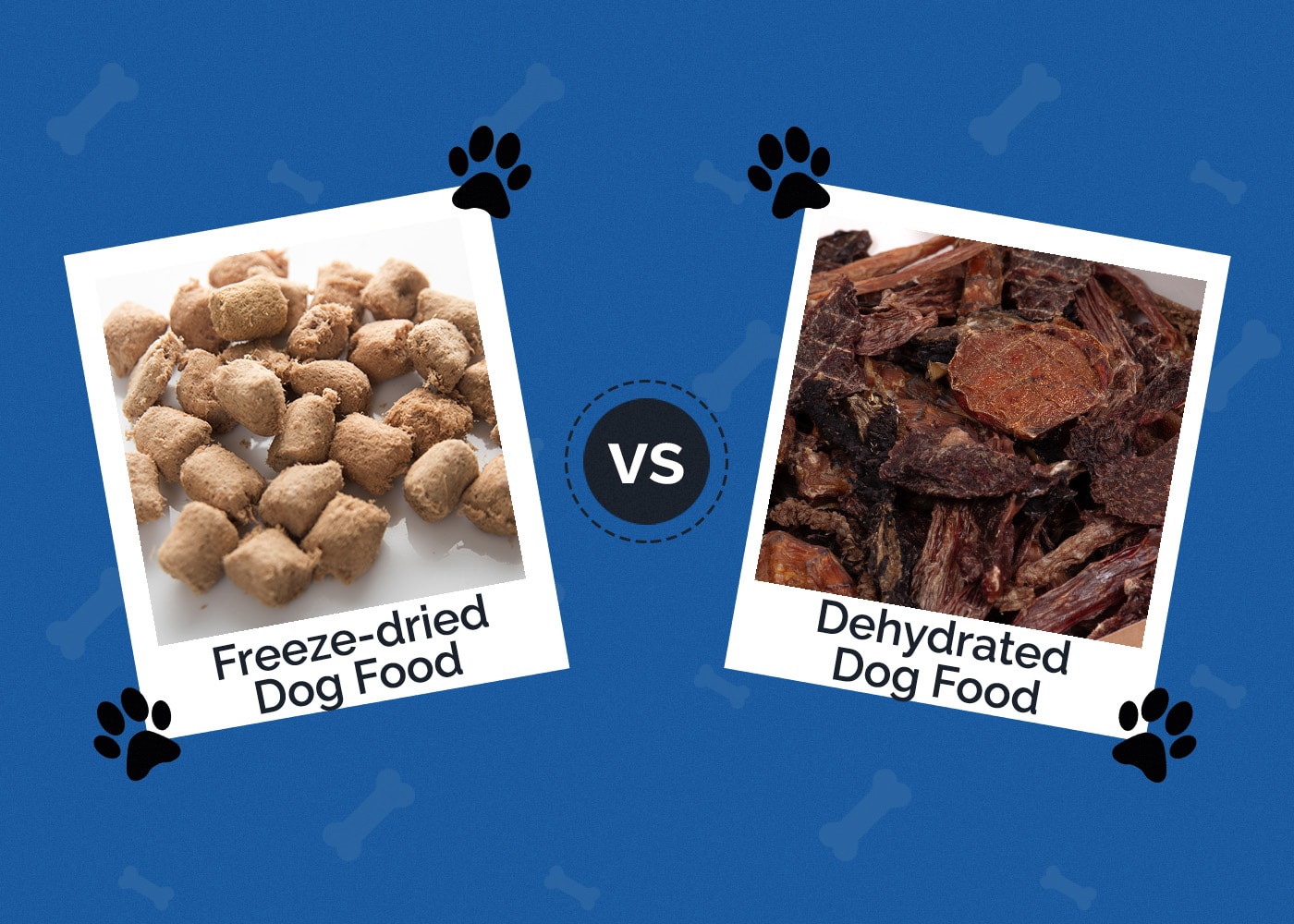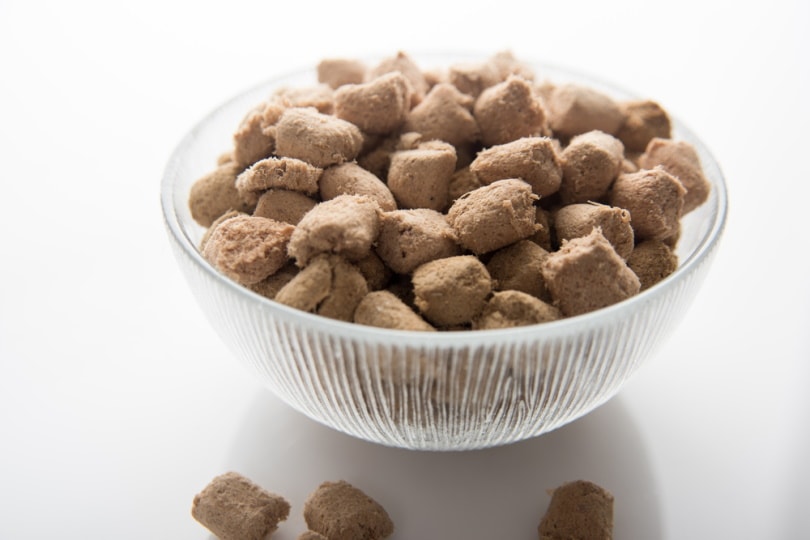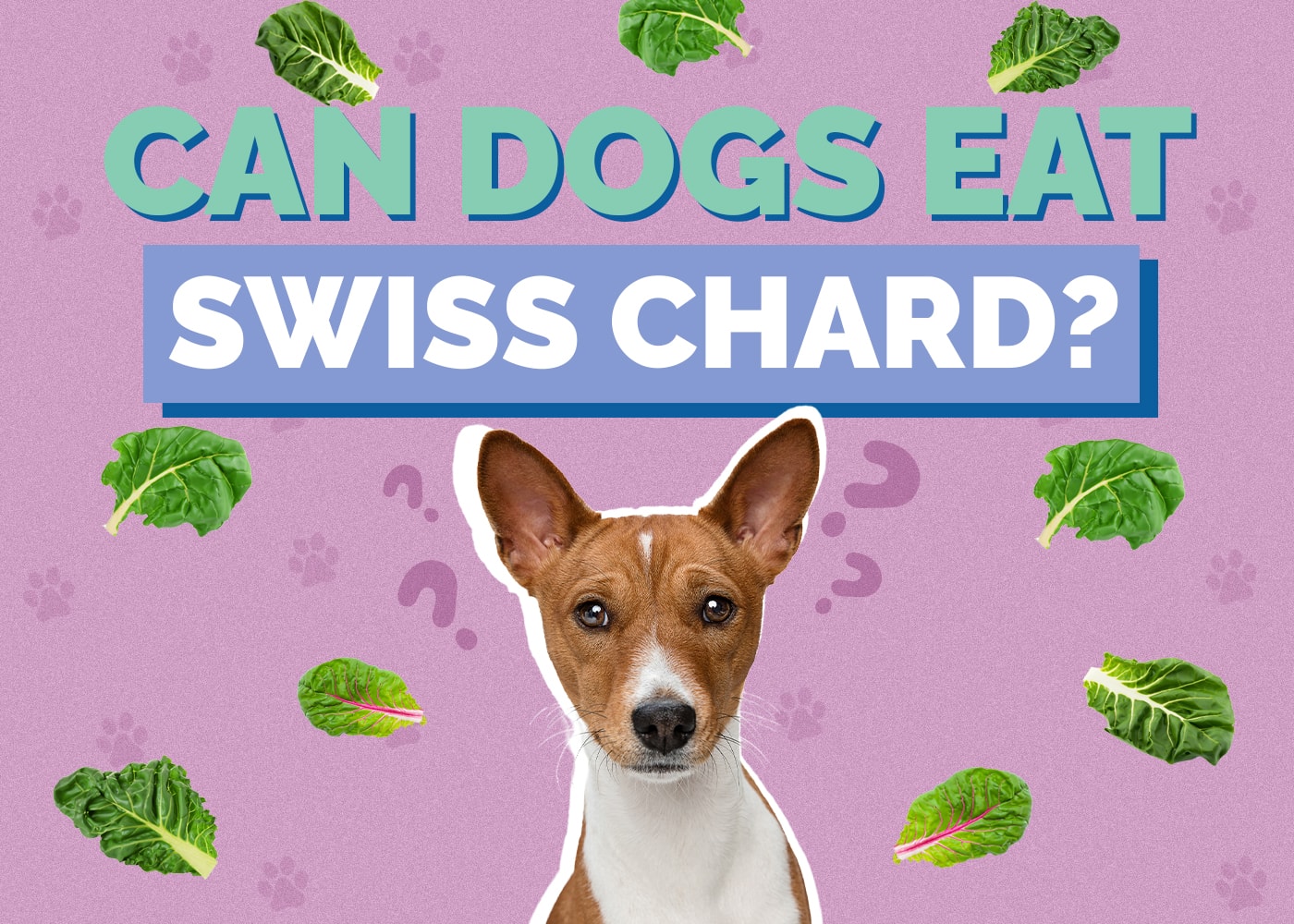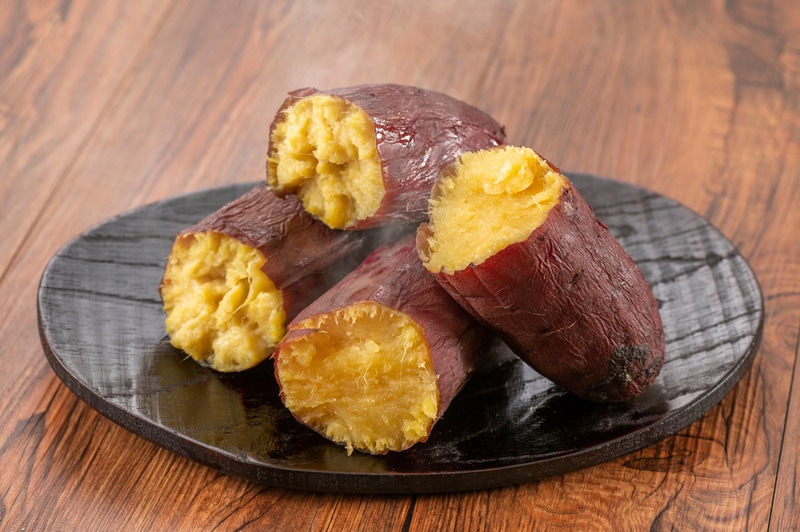Freeze-Dried vs. Dehydrated Dog Food: Vet-Reviewed Differences, Pros & Cons
Updated on

Click to Skip Ahead
Finding the perfect food for your dog can be difficult, thanks to the excellent marketing techniques employed by most pet food companies. In the search for foods that are closer to their natural state and maintain more nutrients than cooked foods, many pet parents have begun to turn to freeze-dried and dehydrated dog foods. These foods are becoming increasingly popular and easy to find in pet stores, and with more exposure to these foods, many people are left with questions. What makes them good or bad? Are they healthy and safe? Here’s everything you need to know.
Visual Differences

At a Glance
- May lose fewer nutrients in processing
- Soft, crumbly texture
- Taste is consistent
- More susceptible to contamination than cooked food
- Rehydration time of 3-10 minutes
- May lose more nutrients in processing
- Jerky-like texture
- Taste may vary based on dehydration methods
- More susceptible to contamination than cooked food
- Rehydration time of 5–10 minutes
Overview of Freeze-Dried Dog Food

Processing and Nutrition
Freeze-dried dog food is prepared through a process that involves dehydrating raw food at a low temperature and under low pressure. This removes the moisture of the product and once frozen, the ice of the product is removed through a process called sublimation. Sublimation is the process of something transferring from a solid to a gaseous state, so in the process of freeze drying, moisture that has been turned to ice is transitioned into a gas and released into the air. You may also see the process of freeze drying referred to as cryodesiccation or lyophilization.
Studies have indicated that foods that have been freeze dried usually retain at least 90% of their nutritional content, as opposed to cooking food with heat, which can reduce some nutrients by as much as 60–70%.1 However, the amount of nutrients that are retained after freeze drying are highly dependent on the food that is being processed, so the retained nutrients can vary. Freeze-dried dog foods are typically raw foods that have gone through the freeze-drying process, so they are more likely to maintain far more nutrients than they would be if they were cooked prior to freeze drying.
Texture and Taste
Freeze-dried dog foods typically have a soft, somewhat crumbly texture. Since the freeze-drying process is fairly consistent, regardless of the product, freeze-dried foods usually have a predictable taste, which is usually similar to the raw taste of the food.

Rehydration
Although some freeze-dried foods are intended to be rehydrated prior to serving, they do not all require it. This makes these foods a great option for dogs that are particular about texture. Rehydrated freeze-dried foods may have a slightly soggy texture, maintaining very little of their “crunch.”
Since freeze-dried foods have had most of their moisture removed, they are shelf stable, but once rehydrated, they should be treated like raw food and not left sitting out all day. Rehydration of freeze-dried foods typically takes between 3-10 minutes, depending on the brand.
Safety
Since most freeze-dried foods are made from raw foods, they do have a higher risk of contamination and food-borne disease than cooked foods, including kibble and cooked canned foods. Raw diets are advised by most vets to be used with extreme caution due to the risks associated with handling raw ingredients, especially meat.
When feeding freeze-dried food, practicing the same handling as you would for non-freeze-dried raw meat is necessary. Hand washing, cleaning of bowls and surfaces, and proper food storage are essential to the safety and health of your dog and everyone else in your household. Strict poo-picking is also vital due to the bacterial load of some dogs fed raw meat products.
While kibble is usually safe to feed a little past its expiration date, although it may become stale, freeze-dried foods should not be fed past their expiration date and open packages should not be kept longer than recommended on the package.
- Freeze-drying process maintains a large percentage of nutrients
- Soft, crumbly texture is good for dogs with chewing problems
- Consistent taste
- Shelf stable
- Increased risk of food-borne illnesses due to raw ingredients
Overview of Dehydrated Dog Food

Processing and Nutrition
Dehydration is a process in which the moisture is removed from food via a method of heating the food in a space with consistent airflow. There are multiple processes that can achieve dehydration, including leaving items in the sun, a conventional oven set to low heat, microwaves, air drying, and dehydration machines.
Although dehydration is achieved through a method involving heat, the heat is kept at a low temperature, so more nutrients are retained than would be with traditional heat cooking methods. Although dehydrated food may weigh 70–94% less than its hydrated form, it usually maintains most of its nutrients. Vitamin A and vitamin C levels can be reduced by dehydration, and depending on the process used, some B vitamins may also be reduced.
Texture and Taste
Since there are multiple processes for dehydrating food, the texture and taste can be inconsistent. Most dehydrated foods have a jerky-like texture, but the hardness of the food can vary. Some dehydrated foods may be quite hard and chewy, while others may have a more friable, soft texture. Consider the different textures of beef jerky you may have eaten, with some being so hard you feel like you can’t chew them and others being soft and pleasant.
With the different processes of dehydration, different flavors and levels of taste may occur. For picky dogs, sticking to one brand of dehydrated food may be necessary since the flavor and texture of the food may vary between products.

Rehydration
Like freeze-dried foods, dehydrated foods are intended to be fed after being rehydrated. This can help improve their texture, especially for foods that are particularly hard or chewy. However, it can take 5–10 minutes to rehydrate dehydrated dog food. Warm water will help rehydrate the food faster than cold water, but most companies don’t recommend the use of hot water. The longer the food is allowed to soak, the softer it will become. If you have a dog that has difficulty chewing, you may need to allow the food to soak for closer to 15–20 minutes.
Safety
Just like with freeze-dried foods, there is an increased risk of food-borne illnesses with dehydrated foods, as they are raw prior to dehydration. Dehydration can slightly “cook” the food, but it does not heat foods to safe internal temperatures in the way that traditional cooking does. Because of this, dehydrated foods should be treated with the same precautions as freeze-dried and raw foods.
- Dehydration processes maintain most nutrients
- A small amount of water needed to be rehydrated to soften the texture
- Light weight
- Shelf stable
- Inconsistent taste and texture
- Longer rehydration time than freeze-dried foods
- Increased risk of food-borne illness due to raw ingredients
Conclusion
Although freeze-dried and dehydrated dog foods both have multiple pros, they also both have cons. The biggest concern with these foods is that they carry a higher risk of contamination and food-borne illnesses than traditionally cooked dog foods. Because of this, they should be handled with caution to maintain the health and safety of everyone in the household. With this increased risk comes more work for most pet owners, taking mealtimes a step beyond simply adding kibble to your dog’s bowl.
Ideally, you should talk to your vet or have a consultation with a board-certified veterinary nutritionist before switching your dog to one of these foods to ensure you choose a food that is nutritionally appropriate for your dog’s needs.
Featured Image Credit: (L) Anna Hoychuk, Shutterstock | (R) Xolodan, Shutterstock













